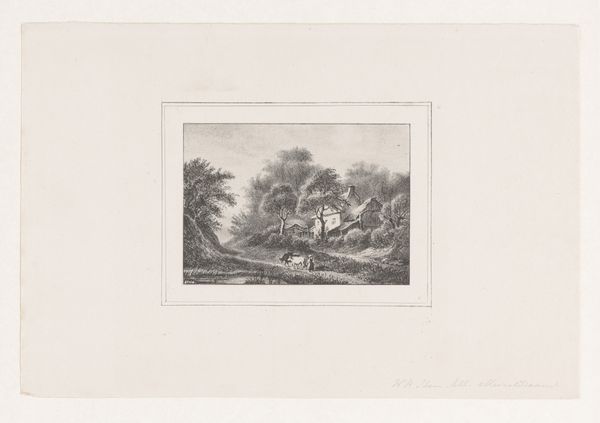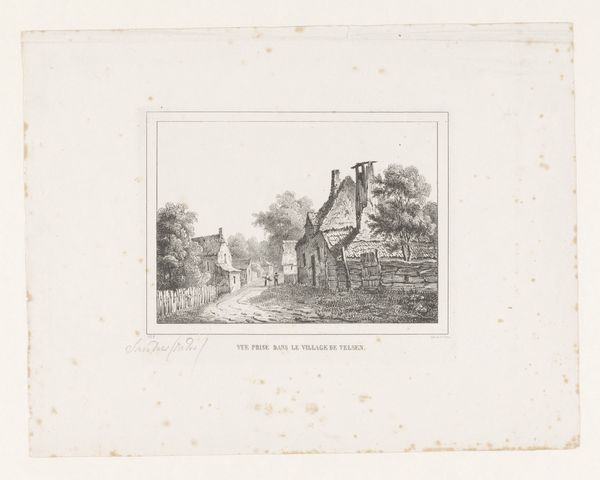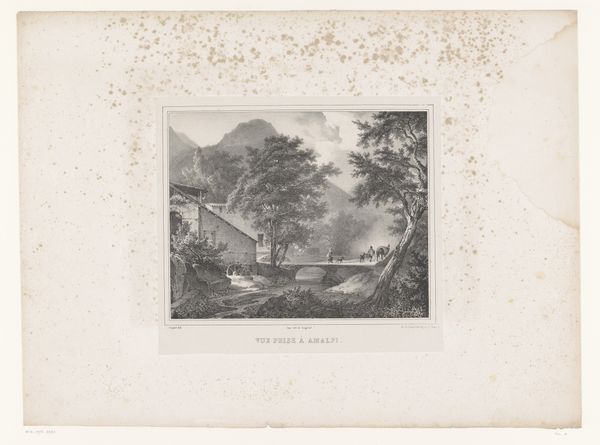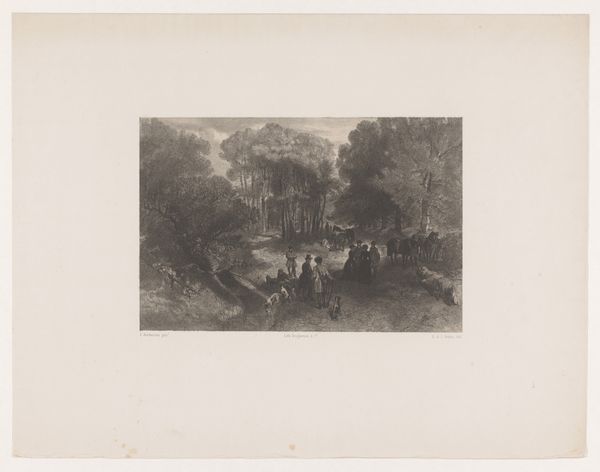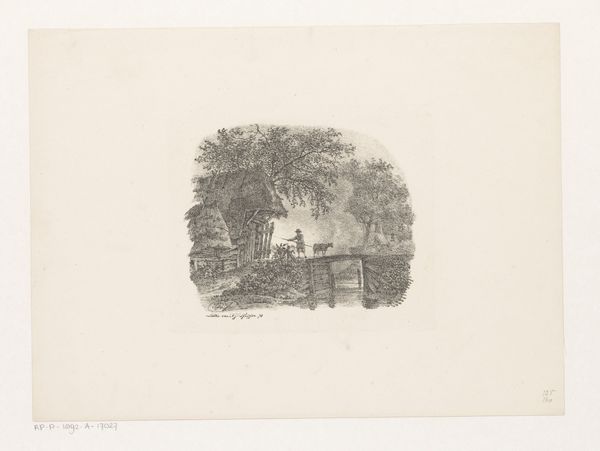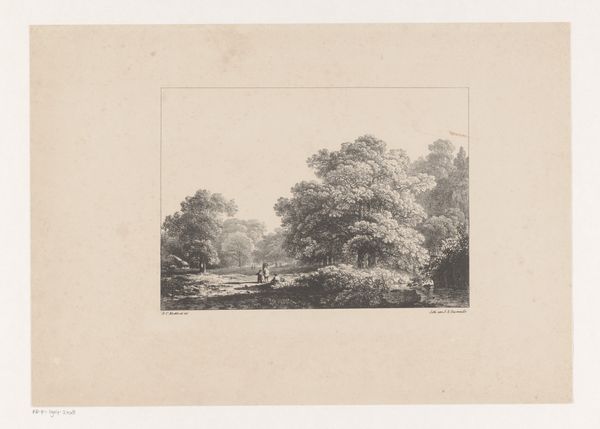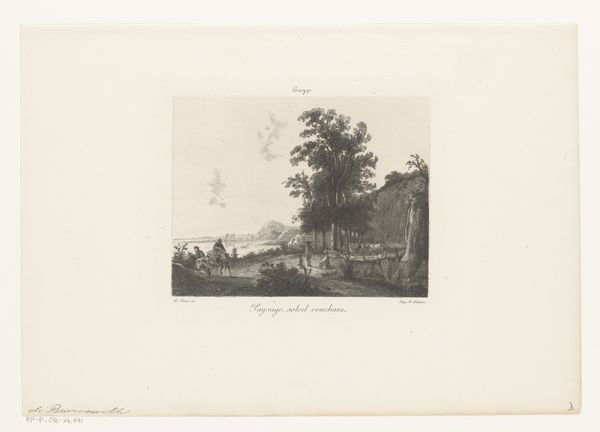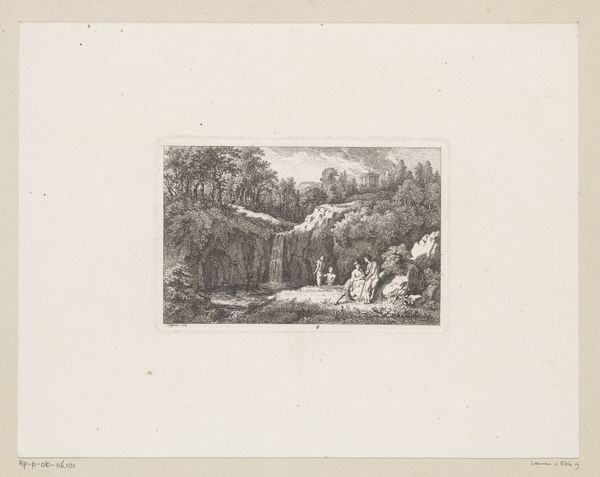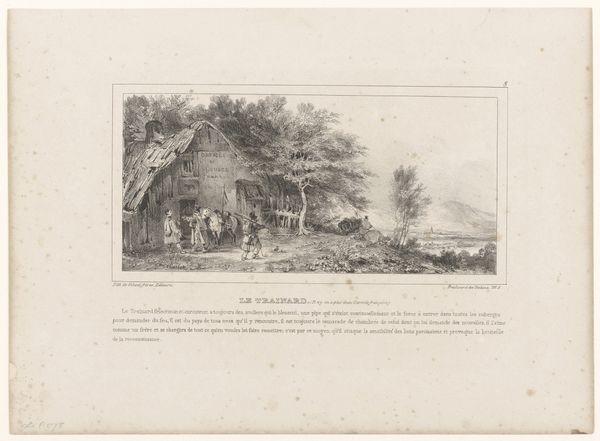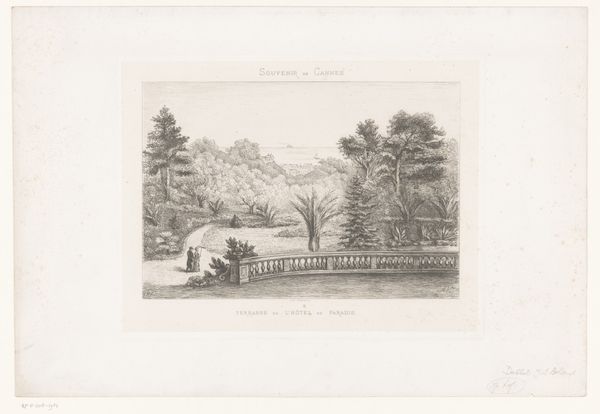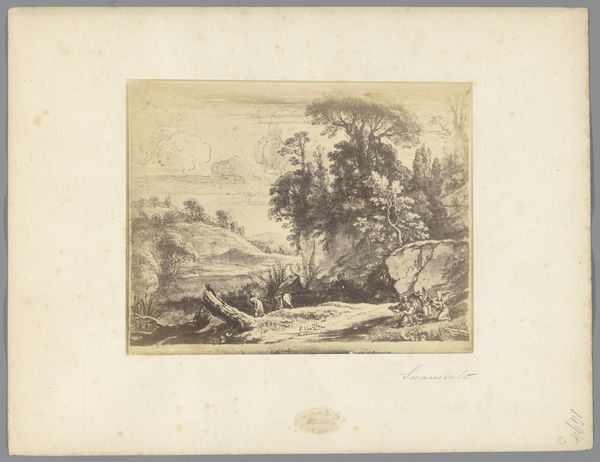
print, engraving
# print
#
old engraving style
#
landscape
#
romanticism
#
genre-painting
#
engraving
Dimensions: height 248 mm, width 338 mm
Copyright: Rijks Museum: Open Domain
Curator: Let’s discuss "Landschap met ruiter en hond," or "Landscape with Rider and Dog," an engraving made in 1831 by Nicolas Toussaint Charlet, found here at the Rijksmuseum. My first impression is one of serene quietude. Editor: Serene? The sharp contrast between light and shadow seems almost theatrical to me. The artist plays with visual texture here, creating depth and an undeniable dynamic energy through line work. It reminds me a bit of romantic era drama. Curator: You perceive a drama in the landscape. I see a subtle interplay between man, nature, and perhaps something of the wild or untamed represented by the dog, all rendered in meticulously fine detail which creates harmony more than anything else. Do you find something specific in the engraving suggesting high drama? Editor: Look closely at how Charlet uses short, repetitive lines versus elongated sweeping ones, he creates a textural difference across the pictorial field, it’s not just descriptive; it is designed to subtly manipulate the eye, creating dynamism as the shadows emerge in front of and underneath the forms to imply great movement across the land itself. Then, of course, he repeats the form, as the figure rides into the hills, you can sense the visual metaphor unfolding as well as the romantic notions about freedom associated with movement through the untamed land. Curator: An intriguing perspective, it makes one think about other possible elements influencing Nicolas' choice, such as the rising genre-painting tendencies during that era, and the use of symbol. But I feel a strong sense of constructed beauty; this to me indicates his concern with visual impact foremost. Editor: We are probably both responding to different aspects of his creative process. He is not just composing nature; he's carefully layering symbolism and evoking emotional responses linked to nature, freedom, and human's presence inside a wider natural history. Curator: And how those individual elements blend reveals an interesting commentary on both Charlet's aesthetic interests and his context. Thanks for giving your take; I've learned a bit here too. Editor: My pleasure. The more lenses we use, the richer our understanding of an artwork becomes.
Comments
No comments
Be the first to comment and join the conversation on the ultimate creative platform.
